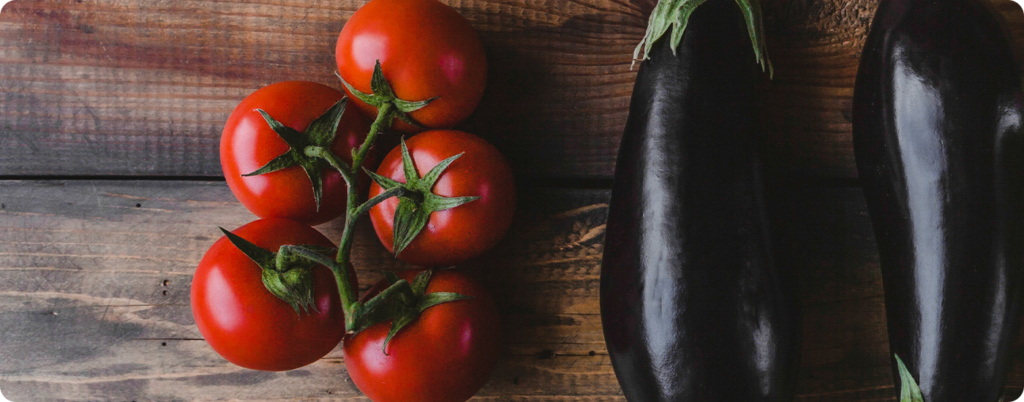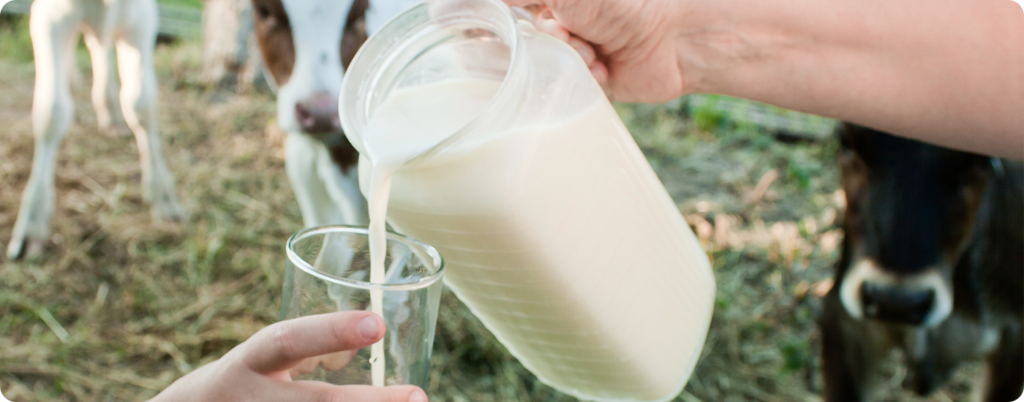PLEASE NOTE: The information in this blog is for educational purposes only. It is not a substitute for professional medical advice. Consult your healthcare provider if you’re seeking medical advice, diagnoses, or treatment.
Wouldn’t it be frustrating if you experienced adverse reactions to otherwise considered healthy foods? Well, this is an unfortunate reality for many with histamine intolerance.
Chronic and unexplained gastrointestinal symptoms affect an estimated 15-20% of the population (1). Histamine intolerance is emerging as a prime suspect for many challenges related to food sensitivities and various seemingly unrelated symptoms.
This article will:
- Define histamine intolerance.
- Explain the symptoms, diagnosis, and treatment of histamine intolerance.
- Outline diet and lifestyle principles for those with this challenge.
- Offer resources to learn more and find medical professionals if needed.
What Is Histamine Intolerance?
Histamine is a chemical produced by your body and found in many foods. It plays a crucial role in immune, digestive, and neurological functions. Histamine is involved in immune and physiological mechanisms such as muscle contraction and inflammation. It’s also a neurotransmitter.
Despite these critical functions, histamine can pose various risks to your health if not broken down properly. Excessive histamine intake has even been implicated in food poisoning outbreaks (2).
Histamine intolerance has become a common issue for many. It is often related to the underproduction of enzyme diamine oxidase (DAO) within the body. Inadequate DAO production can also be due to underlying GI issues or copper deficiency (DAO is a copper-dependent enzyme).
A few other enzymes break down endogenously produced (within the body vs. ingested) histamines, like histamine n-methyltransferase, but dysfunction is rare.
Various factors can contribute to histamine intolerance development, such as genetics, diet, intestinal microbiome disorders, medications, diamine oxidase deficiency, or chronic infections (3, 4).
Histamine intolerance appears to originate in the gut. It can be worsened by histamine-producing bacteria, molds, or yeasts (5, 6).
Just as the causes of histamine intolerance vary widely, so do the symptoms!
Histamine Intolerance Symptoms
While the gastrointestinal tract contains almost all histamine receptors, they are also found in the skin.

Those with histamine intolerance may experience gas, bloating, diarrhea, and eczema. Respiratory symptoms like congestion, runny nose, or asthma-like symptoms are common. Headaches, migraines, and dysmenorrhea are other frequently reported symptoms of histamine intolerance.
Histamine tolerance is not an allergic reaction (as found in food allergies)(7). It is food intolerance from the ingestion and accumulation of histamine. Responses may not appear immediately, as histamine can build up over time. In healthy individuals, histamine can be rapidly detoxified (8).
How to Diagnose and Treat Histamine Intolerance
Histamine intolerance gained widespread attention in the 21st century. Plus, its non-specific nature led to misdiagnoses of IBS, celiac disease, food allergies, or related challenges (9). Reactions from histamine intolerance vary widely and can affect different organ systems (10).
There’s not yet a clear-cut way of diagnosing histamine intolerance. But, with the help of a medical professional, you can determine whether or not you have it. Treatments generally involve a low-histamine diet, DAO supplementation, and addressing other potential contributors (such as mold or infections).
If needed, check out the Society of Metabolic Health Practitioners, where you can find physicians from all around the globe who understand the immense value of making animal foods the center of the diet. Another popular option is IFM Find a Practitioner for a functional medicine approach.
Is the Animal-Based Diet Low in Histamine?
The short answer is yes; the animal-based diet is low in histamine when done properly, as Paul Saladino discusses in this podcast with Evan Brand. Although it may take some adjustments for meat sourcing and food selection, the animal-based diet avoids some of the biggest offenders, like alcohol and certain plant foods.
Figuring out where to settle diet-wise can be incredibly confusing when managing histamine intolerance. But there are several helpful principles that you can follow.
7 Principles for Those With Histamine Intolerance
Speak with your medical provider before making any significant changes. Still, these principles can be helpful to remember when you have histamine intolerance.
1. Foods To Avoid
You can find dozens of low-histamine food lists across the internet. Unfortunately, what foods to include as part of a low-histamine diet is more complex than expected.
Some studies have found that eggplant, avocado, spinach, and tomato are the only plant foods with significant amounts of histamine (11).

Many low-histamine food lists overlook other amines such as putrescine, tyramine, and cadaverine.
For example, zucchini, green peppers, and sweet corn are generally “acceptable” on a low-histamine diet. However, these contain relevant amounts of putrescine, which may contribute to similar adverse responses.
One study showed that 68% of foods not allowed on a low-histamine diet showed no significant histamine levels in any analyzed samples. Bananas, citrus fruits, nuts, pumpkins, and soybeans did not display substantial histamine content. They did have relevant putrescine contents (12).
The histamine content of foods is also impacted by manufacturing processes, cleanliness, microbial composition, and fermentation (13). Differences can also result from geography, storage time, cooking process, and ripeness. So, some foods may cause issues even if they’re “low-histamine.”
There is no one-size-fits-all approach. Here are some commonalities that are better understood:
- Avoid or limit histamine-rich foods such as sauerkraut, pickles, aged cheese, vinegar, or meat or fish that have been dried, smoked, or cured.
- Some foods like citrus fruits, strawberries, bananas, pineapple, papaya, tomatoes, pork, egg whites, or chocolate are suggested to be histamine liberators (14,15). However, the ability of certain foods to release histamine needs to be better understood, and there are no clinical studies in humans (16).
- Avoid alcohol and other DAO-blocking substances (17,18,19,20). Red wine, in particular, is rich in histamine.
Those struggling with gut health or unpleasant symptoms may want to avoid or limit gut-irritating foods like leaves, stems, nightshades, and seeds (nuts, grains, and legumes). The overconsumption of defense chemicals found in common plant foods can contribute to intestinal permeability (21,22,23).
Again, there’s no one-size-fits-all approach. Pay attention to your body and work with your medical professional to find the best path forward.
2. Food Handling Strategies
Bacteria are everywhere. While most are harmless, there are some bad actors. They require food, acidity, time, temperature, moisture, and oxygen to grow. Specific strains of bacteria can form histamine (24).

Here are some tips to help minimize the production of excess bacteria.
- Store food in airtight, glass containers.
- Thaw meat in the fridge or cold water.
- Wash your fruits and vegetables. Boiling certain vegetables can decrease the content of histamine and other amines (25).
- Ensure you’re washing your hands, towels, cutting boards, and other kitchen utensils to prevent transmission of excess bacteria. Some items like dishcloths should be replaced frequently (26).
Each step can address one or more components necessary for bacterial growth.
3. Consider Buying Unaged, Low-Histamine Meats
Sourcing meat and seafood from the grocery store may not work if you have histamine intolerance.
Most beef or bison products are aged for about 21 days, contributing to tender and flavorful meat. If you buy meat from a grocery store, you don’t know how long it was in transit or how long it’s been on the store shelves. This can result in meat or seafood that’s much higher in histamine.
Where can you find unaged meat or seafood? Thankfully, quite a few places.
Northstar Bison sells low-histamine chicken, beef, bison, elk, lamb, rabbit, and wild-caught seafood. They also offer a variety of organ meats.
TruBeef Organic offers high-quality beef and lamb. Their meats are unaged and quickly frozen. The animals are regeneratively raised and only fed 100% organic, wild grasses. Their packaging is also free from BPA and PFAS.
Wild Meadows Farm sells various low-histamine beef cuts out of Canada. They also offer pork and chicken, given non-GMO, corn, and soy-free feed.
Alaska Gold Seafood uses flash-freezing techniques on all of its seafood. They sell salmon, halibut, cod, and other seafood from cold Alaskan waters.
Some also find focusing on chicken, rabbit, turkey, lamb, or elk helpful. Larger animals must be hung longer, so smaller animals may be better tolerated.
4. Fresh is Best
Meat and fish can be consumed as part of a low-histamine diet if freshness is considered (27).
When dealing with histamine intolerance, it’s crucial to source incredibly fresh meat or that which has been frozen shortly after being harvested. Bacteria don’t reproduce as quickly when meat is frozen.

Thus, we strongly suggest building a relationship with a local farmer/rancher from whom you can buy ultra-fresh meat and organs (which often come frozen).
Organ meats, in particular, tend to accumulate histamines faster than muscle meat. If frozen organs are not an option, stick to desiccated organs that have been freeze-dried promptly after being harvested, such as those we use in our products.
The importance of freshness also applies to fruits and vegetables as this can help to prevent amine production (28).
5. Obtain Key Nutrients
In our view, taking nutrients through food rather than through isolated nutrient supplements is ideal. With this, we believe that the most effective way to prime the body for optimal histamine metabolism while simultaneously healing the gut is to follow a strategically constructed nose-to-tail, animal-based diet.
Avoiding histamine entirely is almost impossible, so supplying the body with DAO before meals can help prevent troubling symptoms (29). Some of the best natural sources of DAO are beef kidney and beef thymus, vital ingredients in our Histamine & Immune formulation.
This supplement consists of grass-fed lung, kidney, thymus, spleen, and liver to support a healthy immune system, a robust response to infectious insults (bacteria, viruses, fungi), and proper histamine metabolism.
Liver contains crucial nutrients, including vitamin A, which has anti-inflammatory properties that can benefit many conditions (30). The main enzyme for histamine metabolism is diamine oxidase (DAO). Vitamin B6 and copper, both found in the liver, are vital cofactors for robust DAO activity (31).
Histamine & Immune is our most popular option for those with histamine intolerance. We’ve received numerous reviews similar to Michelle’s:

As mentioned previously, Vitamin B6, Vitamin C, Zinc, and Copper play indispensable roles in histamine metabolism. An insufficiency of these components may contribute to heightened sensitivity to histamine (32). These are readily found in an animal-based diet due to muscle meat, organs, fruits, dairy, and other foods.
6. Introduce Gut Healing Foods
An animal-based diet can shift gut bacteria in the right direction and help improve histamine intolerance symptoms.
Still, more is needed to cultivate a diverse microbiome or fully restore gut health in many cases. Some of the best contributors to optimal gut health include bone broth and raw milk.
Please note: Not everyone can tolerate all of these foods right away. If you decide to give these foods a try, start small and work your way up gradually. Moving too quickly can often result in unnecessary discomfort.
Low-Histamine Bone Broth
Few foods are more beneficial to the gut than high-quality bone broth. Bone broth is a fantastic collagen source, essential to maintaining a robust intestinal epithelium (33). It also provides essential minerals that play countless roles in our bodies, including glutamine, calcium, phosphorus, magnesium, sulfur, sodium, and potassium.
Making your bone broth at home is critical for those with histamine intolerance. With this, there are a few essential things to know to mitigate the development of histamine:
#1 Only use fresh bones, tendons, oxtail, etc.
#2 You must use a pressure cooker. Around two hours reliably creates a delicious broth while minimizing histamine production.
#3 Freeze the broth immediately after it’s ready. Store the broth in ice trays like these to portion out the broth for easy reheating. This instant pot bone broth recipe offers additional insight.
This low-histamine meat stock recipe is another option if you can’t access a pressure cooker or tolerate bone broth.
Raw Milk

Raw, unpasteurized milk from grass-fed cows is one of the few things on this planet that is truly worthy of being called a “superfood.” It provides fat- and water-soluble vitamins in their most bioavailable forms (34) while containing enzymes, bacteria, and unique peptides that improve digestion, microbial diversity, and overall health (35,36).
Unfortunately, conventional pasteurization kills beneficial bacteria. It denatures the enzymes and amino acids typically found in milk, stripping away its natural healing capacity and compromising digestibility (37).
Raw milk can sometimes be tricky to track down. Check out RealMilk.com or GetRawMilk.com to use their Raw Milk Finder tools, and once again, you want to source very fresh milk and freeze what you will not drink that day.
Despite the potential benefits, both options can still be tricky for individuals with histamine intolerance.
7. Examine Your Medications

It may be worth taking a closer look at your medications with a medical professional.
Certain medications like NSAIDs (such as aspirin), antibiotics, and muscle relaxants can stimulate histamine release (38, 39, 40). Impaired diamine oxidase (DAO) activity can have a pharmacological origin (41).
Organ Supplements & Histamine Intolerance
Age and heat increase histamine levels in food, which is why some people may have issues with bone broth and organ meats.
Our products are 100% freeze-dried almost immediately after being harvested. This process minimizes the production of histamine, and even those who report extreme sensitivity to histamines in food have commented favorably about the tolerability of our products.
However, we always encourage anyone with food sensitivities to start slow. This looks like one capsule every other day for two weeks, then increase to one capsule every day for one whole week before moving on to two capsules, and so on until you’ve reached an amount that works best for you (many individuals thrive on 2-3 capsules daily).
Week one: One capsule every other day
Week two: One capsule daily
Week three: Two capsules daily
And so on!
Giving the body these unique nutrients and gradually titrating up has been an incredibly valuable solution for many individuals.
Histamine Intolerance: Tricky, But Not Impossible to Overcome
Histamine intolerance can be incredibly difficult to manage. It flies under the radar for many people, and symptoms continue for months (or years) without answers.
Thankfully, the understanding of this challenge is expanding as it gains more recognition.
The symptoms of histamine intolerance vary widely and result from numerous foods considered “healthy” for most people.
Following food sourcing and handling principles, obtaining essential nutrients, healing your gut, and working with a medical professional can all help overcome histamine intolerance!
Subscribe to future articles like this: